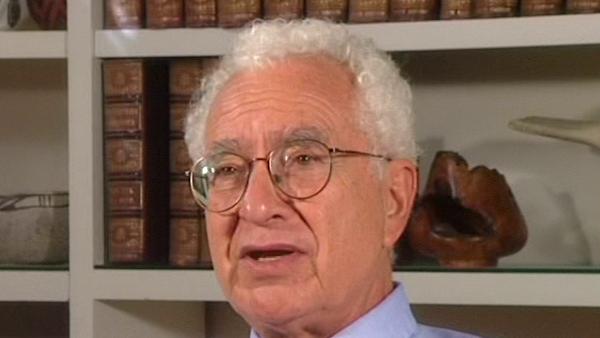NEXT STORY

My 'business trip' honeymoon in 1992
RELATED STORIES

NEXT STORY

My 'business trip' honeymoon in 1992
RELATED STORIES


|
Views | Duration | |
|---|---|---|---|
| 131. Feynman's partons | 1458 | 03:12 | |
| 132. Quarks as asymptotic states. Missed opportunities | 580 | 01:35 | |
| 133. A year at CERN. Parastatistics and color | 516 | 02:57 | |
| 134. Parastatistics and color: using the correct data | 460 | 00:52 | |
| 135. Calculating pi-zero into two gamma. Giving a talk in Munich | 476 | 02:59 | |
| 136. My 'business trip' honeymoon in 1992 | 501 | 03:07 | |
| 137. Reading from Quarks, color and QCD | 477 | 02:37 | |
| 138. The ninth axial vector current and the corresponding pseudo-scalar... | 434 | 03:03 | |
| 139. Asymptotic freedom in field theory; Gross and Wilczek | 779 | 02:03 | |
| 140. The color picture with confined color | 444 | 01:06 |


Then we looked at the idea of calculating the pi-naught into two gamma, approximately. That had been done many, many different ways, always with the same answer. It was done back in something like 1950 by Jack Steinberger, who spent a year at the Institute for Advanced Study, and he did a calculation of pi-naught in two gamma, based on perturbation theory with a neutron and proton, and he got the answer approximately right. No, how did he do it? It wasn't exactly perturbation theory, I've forgotten what the argument was, but anyway he made a clever argument to get the answer essentially right.
Then, with the discovery of anomalies and using pole dominance, Stephen Adler and various other people, I forget exactly who they were, but various theorists showed that you would get this as a real theorem in the limit of light… light pion, and that it represented a very important quantity because it was a sum over the product of the axial charges and the… the fundamental axial charges and the fundamental electric charges squared… multiplied by the fundamental electric charges squared of the elementary objects in the theory, because those would give the... the anomaly. So Bardeen and Fritzsch and I looked into this and we saw that with color the quarks would give the right answer, and that was really... that was really beautiful.
Around this time I went to Munich—München—and gave a talk there, which Heisenberg attended, and Heisenberg had been hostile to all of the good ideas in this area. He hadn't believed in strangeness; he hadn't believed in SU(3), approximate SU(3), he said it was like approximating a cube by a sphere or something like that; and… and now he didn't believe in the quarks and he didn't believe in this calculation. He thought the correct calculation was one with neutron and proton and no color. But of course, quarks and color give the same answer as neutrons and protons and no color. We made some sort of a bet, but it was never clear enough that anyone could collect. The… then we worked further with these… with these ideas in the fall of ’71 and the spring of ’72. I gave some lectures in the winter at Schladming where I described our results a little bit.
New York-born physicist Murray Gell-Mann (1929-2019) was known for his creation of the eightfold way, an ordering system for subatomic particles, comparable to the periodic table. His discovery of the omega-minus particle filled a gap in the system, brought the theory wide acceptance and led to Gell-Mann's winning the Nobel Prize in Physics in 1969.
Title: Calculating pi-zero into two gamma. Giving a talk in Munich
Listeners: Geoffrey West
Geoffrey West is a Staff Member, Fellow, and Program Manager for High Energy Physics at Los Alamos National Laboratory. He is also a member of The Santa Fe Institute. He is a native of England and was educated at Cambridge University (B.A. 1961). He received his Ph.D. from Stanford University in 1966 followed by post-doctoral appointments at Cornell and Harvard Universities. He returned to Stanford as a faculty member in 1970. He left to build and lead the Theoretical High Energy Physics Group at Los Alamos. He has numerous scientific publications including the editing of three books. His primary interest has been in fundamental questions in Physics, especially those concerning the elementary particles and their interactions. His long-term fascination in general scaling phenomena grew out of his work on scaling in quantum chromodynamics and the unification of all forces of nature. In 1996 this evolved into the highly productive collaboration with James Brown and Brian Enquist on the origin of allometric scaling laws in biology and the development of realistic quantitative models that analyse the influence of size on the structural and functional design of organisms.
Tags: Institute for Advanced Study, Munich, Schladming, Austria, Jack Steinberger, Stephen Adler, William A Bardeen, Harald Fritzsch, Werner Heisenberg
Duration: 3 minutes
Date story recorded: October 1997
Date story went live: 29 September 2010